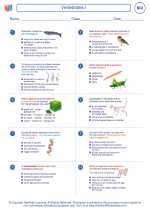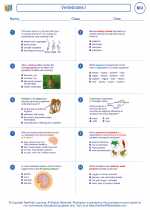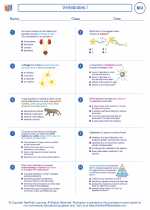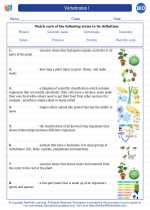Primates
Primates are a group of mammals that includes humans, apes, monkeys, and prosimians. They are characterized by their advanced cognitive abilities, flexible limbs, and forward-facing eyes. Primates are found in various habitats around the world, and they exhibit a wide range of behaviors and social structures.
Classification of Primates
Primates are classified into two suborders: Prosimii (or prosimians) and Anthropoidea (or anthropoids).
- Prosimii: This group includes lemurs, lorises, and tarsiers. They are typically smaller in size and have characteristics that are more primitive compared to anthropoids.
- Anthropoidea: This group includes monkeys, apes, and humans. They are generally larger in size and have more advanced cognitive abilities.
Characteristics of Primates
Some key characteristics of primates include:
- Opposable thumbs: Most primates have opposable thumbs, which allow them to grasp and manipulate objects with precision.
- Binocular vision: Primates have forward-facing eyes, which provide them with depth perception and improved visual acuity.
- Complex social behavior: Many primates live in social groups and exhibit complex social behaviors such as grooming, communication, and cooperation.
- Large brain relative to body size: Primates have relatively large brains compared to other mammals, which is associated with their advanced cognitive abilities.
Adaptations and Diversity
Primates have adapted to a wide range of environments, from tropical rainforests to savannas and mountains. This has led to the evolution of diverse physical and behavioral traits among different primate species.
Study Guide
To study the topic of primates, consider the following key points:
- Identify and describe the major groups of primates, including prosimians and anthropoids.
- Understand the key characteristics that define primates, such as opposable thumbs, binocular vision, and complex social behavior.
- Explore the adaptations of primates to different environments and the diversity of primate species.
- Compare and contrast the behaviors and social structures of different primate species.
- Examine the evolutionary relationships between humans and other primates, and discuss the significance of these relationships.
By understanding these concepts, you can gain a comprehensive understanding of the fascinating world of primates and their place in the animal kingdom.
[Primates] Related Worksheets and Study Guides:
.◂Biology Worksheets and Study Guides High School. Vertebrates I

 Worksheet/Answer key
Worksheet/Answer key
 Worksheet/Answer key
Worksheet/Answer key
 Vocabulary/Answer key
Vocabulary/Answer key
 Vocabulary/Answer key
Vocabulary/Answer key
 Vocabulary/Answer key
Vocabulary/Answer key
